

| ▲ Workshop |
I had seen photos in catalogs of the beautiful "Meco Midget" gas torch and was so impressed by it I decided to have a go at making one. I've a small supply of different sizes of hypodermic needles which would be ideal for tips.
The supplier I used for the hypodermic needles was Medisave (http://www.medisave.co.uk/). Surprisingly, you can order all sorts of needles and syringes online without any problems. A pack of 100 needles is only £3 or so. I used two sizes - 21 gauge (0.8mm OD, 0.5mm ID, green) and 18 gauge (1.3mm OD, 0.8mm ID, pink). When I bought them, only sharp needles were available so I had to carefully sand down the ends before using them. Blunt "drawing up" needles are available, but they were out of stock at the time.
You can also get all-metal needles, which are better for using as torch tips because the plastic ones tend to melt after a while with the heat that travels back down the needle. One site that was suggested to me was http://www.dispensinglink.com/SS%20Reusable%20Needles.htm, although they are in the US.
Here's some pics of the Meco Midget torch. This is available from several places on the web for around $100. These aren't mine - they're from the web.
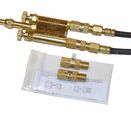 |
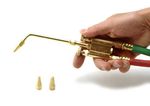 |
 |
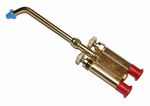 |
Below is my version of the torch. A CAD file of the parts is available here. I also found an interesting patent on another micro torch which shows the internal mechanism - see here. Note that the final design is slightly different from the CAD file since I made small modifications as I was building it.
The body is based on a piece of 1"×½" aluminium bar. Gas enters via two brass nipples which also act as the seats for the needle valves. The needle valves are made from two parts - the needle + stem itself and the aluminium knob. This enables an O-ring to be used to seal the needle (if the valve stem was machined from solid with an O-ring groove, it would be impossible to stretch the O-ring far enough to get it over the main diameter of the valve stem).
The outlet is via a 1/8" stainless-steel tube. A small brass piece is soldered to the end and is turned to the ~1.2° taper required for the Luer fitting on the needle. The needle is then simply a press fit on the end of the tube.
The propane inlet connection was a 3/8" left-hand BSP thread, which gave me an excuse to try left-handed threading on the lathe. I'd never done it before (plenty of RH threads) but it went without a hitch.
The end result is a fine flame which is ideal for delicate soldering work or (as was originally intended) cutting glass tubing by scratching and heating. The valves are rather sensitive, but manageable.
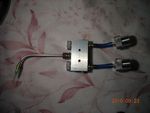 Overall view of torch |
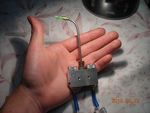 Another view |
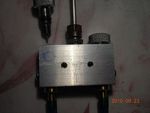 Needle valve removed |
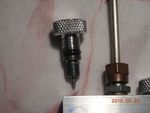 Closeup of needle valve showing knob and sealing O-ring |
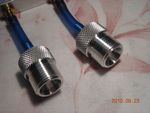 Gas connections (RH and LH) |
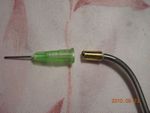 Tip |
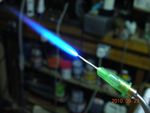 Flame produced (oxy-propane) |
15/05/11: I needed to get a lot of heat into the end of glass tubing for forming a flange, so I made a little ribbon burner. It has 0.4mm diameter holes on a 1mm pitch, and is about 30mm long.
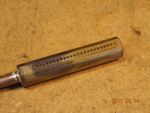 |
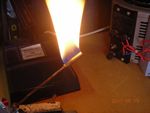 |
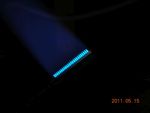 |
Here's a video showing the flame being adjusted.
| ▲ Workshop |